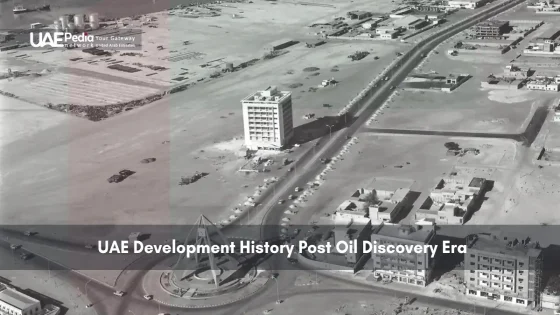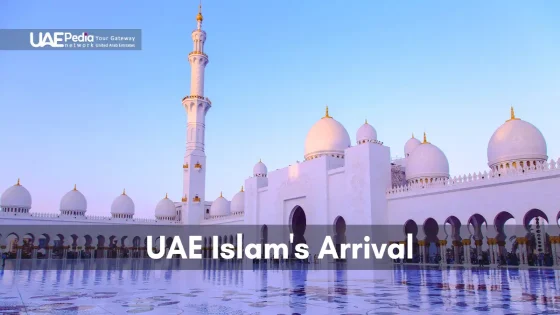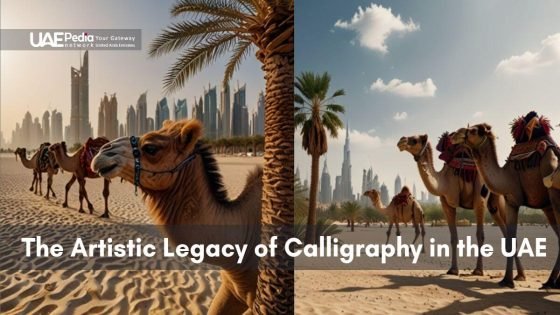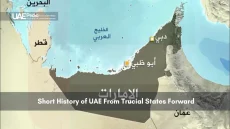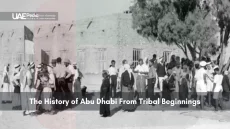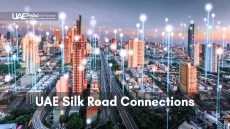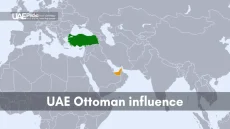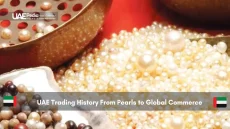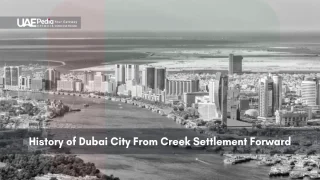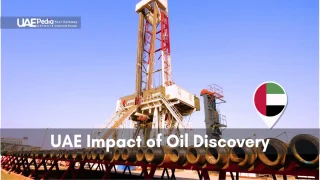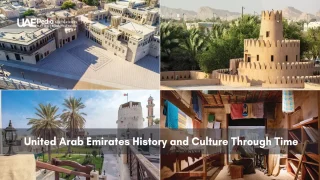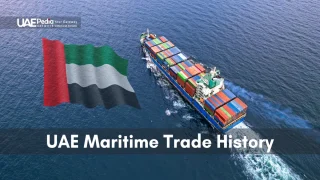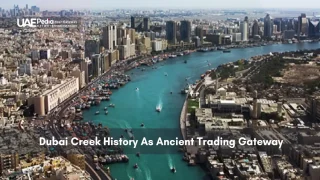What if we told you the united arab emirates you see today—gleaming skyscrapers beside desert dunes—was shaped by more than oil wealth? Long before black gold transformed this country, its story began with pearl divers braving the Gulf and Bedouin tribes navigating sand seas.
The arab emirates have always been crossroads of trade and tradition. Ancient frankincense routes once crisscrossed these lands, connecting empires. But the 20th century brought a seismic shift: oil discovery turned quiet coastal villages into global players almost overnight.
Yet this isn’t just a tale of sudden riches. The united arab visionaries chose to reinvest, blending modern ambition with timeless values. They built schools where camel caravans once roamed, designed cities that touch the clouds, and preserved heritage sites amid the futurism.
Here’s what we’ll uncover:
- How ancient trade networks laid the foundation for today’s economic powerhouses
- The pivotal role of oil in accelerating—not creating—the nation’s innovative spirit
- Cultural bridges connecting pearl-diving pasts to AI-driven futures
Introduction: The Transformation Journey of the United Arab Emirates
Imagine a place where wind towers cooled homes centuries before air conditioning—where today’s glass skyscrapers reflect those same desert sunrises. The arab emirates didn’t just modernize; they reimagined possibility while keeping one foot firmly in tradition.
When seven sheikhdoms united in 1971, they faced a unique challenge: building a cohesive government across 83,600 sq km (about New Jersey’s size) with a population smaller than Houston’s. Fast forward five decades—the united arab emirates now hosts over 200 nationalities, with Emiratis comprising just 11% of residents. “Our strength lies in our diversity,” a Dubai planner once told me, “like sand grains forming dunes.”
Here’s the kicker: While oil wealth turbocharged growth, leaders prioritized long-term vision over quick wins. They channeled resources into:
- World-class airports connecting six continents
- Futuristic solar farms amid oil fields
- Heritage villages preserved beside AI labs
The arab emirates dance between past and future with practiced ease. In Sharjah’s art district, you’ll find calligraphers teaching robots Arabic script. Abu Dhabi’s Louvre branch displays millennia-old artifacts under Jean Nouvel’s starry dome. As Sheikh Zayed famously said:
“A country without its past is like a tree without roots.”
This united arab approach transformed barren coasts into global hubs—without losing their soul. Next time you marvel at Dubai’s Burj Khalifa, look closer: its design echoes desert lilies, proving innovation grows best when rooted in tradition.
Pre-Oil Foundations of a Nation
Beneath the shimmering skyscrapers lies a secret older than oil—ancient trade routes and forgotten cities. Long before tankers crossed the Gulf, merchants hauled frankincense through dunes where Dubai’s metro now hums. Let’s dig into the soil of time.
Archaeological Evidence and Ancient Civilizations
Pottery shards at Ed-Dur reveal a bustling port from 2,000 BCE. At Hili Gardens, we’ve found Bronze Age tombs aligned with stars—proof early residents tracked seasons for farming and travel. “These weren’t just nomads,” says archaeologist Dr. Ahmed Al Mansoori. “They built systems to thrive in harsh climates.”
The Legacy of the Trucial States
The trucial states weren’t just dots on a map. By the 19th century, their pearl markets buzzed with traders from India to Zanzibar. Leaders forged agreements that later shaped the federal structure we see today. Check out how their old-school smarts still matter:
| Ancient Trade Goods | Modern Equivalent | Cultural Impact |
|---|---|---|
| Pearls | Luxury Tourism | Global branding |
| Frankincense | Oil Exports | Economic diplomacy |
| Date Palms | Vertical Farms | Sustainability focus |
Coastal watchtowers from the trucial states era still guard Fujairah’s shores—now protecting heritage, not pearls. This blend of old and new? It’s why Abu Dhabi’s Louvre displays 8th-century dhows beside VR installations. As a Ras Al Khaimah elder once told me: “We don’t erase footsteps. We build bridges between them.”
From Tribal Societies to Early Maritime Trade
Picture this: desert tribesmen bartering with sailors from distant lands, their goods exchanged under palm-frond shades. Long before oil tankers, the sea whispered promises of connection—a liquid highway linking continents. Coastal communities here didn’t just survive; they thrived by mastering winds and waves.
Ancient Trade Networks and Cultural Exchanges
Salt-crusted dhows—those iconic wooden ships—became the region’s lifeline. Loaded with dates, pearls, and spices, they rode monsoon winds to India and East Africa. Along the coast, natural ports like Julfar (today’s Ras Al Khaimah) buzzed with languages from Swahili to Malayalam. A 14th-century trader’s journal found near Dibba reads:
“We measure wealth not in coins, but in stories shared over cardamom coffee.”
These routes did more than move goods. They swapped ideas:
- Arabic numerals met Indian mathematics
- Persian irrigation techniques nourished date farms
- African rhythms blended with Bedouin poetry
Check out how ancient trade echoes today:
| Ancient Goods | Trade Routes | Cultural Impact |
|---|---|---|
| Pearls | Persian Gulf to Rome | Luxury craftsmanship |
| Frankincense | Oman to Mediterranean | Religious rituals |
| Textiles | India to East Africa | Fashion crossovers |
By the 18th century, settlements along coastlines had become melting pots. Sailors married locals, creating families who spoke three languages before breakfast. The sea wasn’t just a workplace—it was a bridge between worlds, proving that even then, this region knew how to turn tides into opportunities.
The Turning Point: Discovery of Oil
The moment black gold bubbled up from Ras Sadr’s sands in 1958, everything changed. You can almost hear the cheers echoing across the desert—a sound louder than the drill rigs themselves. This wasn’t just oil; it was a key unlocking doors to futures once deemed impossible.
Early Drilling Efforts and Challenges
Teams battled 120°F heat and sandstorms that buried equipment overnight. Water shortages forced crews to ration sips like liquid gold. Yet Sheikh Zayed rallied teams, declaring: “Our power lies not in machines, but in grit sharper than diamond drill bits.”
By 1962, the first export tanker sailed from Abu Dhabi. The triumph? A blend of borrowed tech and local ingenuity—like using palm fronds to stabilize drilling platforms. It proved desert wisdom could tame industrial challenges.
The Impact on Local Infrastructure
Oil revenues sparked a construction frenzy. Dirt tracks became highways linking once-isolated villages. Ports expanded to handle booming trade, while clinics replaced camel-carried medicine. Check out the before-and-after:
| Pre-Oil Era | Post-Oil Development | Impact |
|---|---|---|
| Donkey caravans | Trans-Arabian highways | Faster goods movement |
| Well water | Desalination plants | Reliable supply |
| Pearl markets | Global trade hubs | Economic diversity |
New economic forces emerged overnight. Bedouin traders became construction magnates. Fishing dhows docked beside oil tankers. Sheikh Zayed channeled wealth into schools and hospitals, ensuring growth reached every corner.
This oil-fueled leap didn’t erase the past—it built bridges to tomorrow. As one engineer noted: “We didn’t just strike oil. We struck a match that lit the nation’s path forward.”
Investment and Transformation Driven by Oil Revenues
Think of oil wealth as sunlight—it doesn’t create the plant, but fuels its growth. When black gold began flowing, sheikhs faced a critical choice: spend fast or build smart. They chose both, channeling resources into pillars that would outlast any oil boom.
Healing Sands, Growing Minds
In 1975, a single hospital served all seven emirates. By 1990, Sheikh Rashid had spearheaded 22 modern facilities. “Healthcare isn’t luxury—it’s dignity,” he declared. The government didn’t stop there:
- Free prenatal care cut infant mortality by 80%
- Medical schools attracted global talent
- Mobile clinics reached remote desert communities
Education followed suit. Oil-funded universities became innovation hubs where Bedouin astronomy meets AI research. Today, 94% of Emirati women enroll in higher education—a quiet revolution rooted in 1970s vision.
Concrete Dreams, Living Cities
Emirate Abu Dhabi became a testing ground for urban alchemy. Architects blended wind-tower cooling principles with glass facades. Check how old met new:
| 1970s Challenge | Modern Solution | Impact |
|---|---|---|
| Scarce fresh water | World’s largest desalination network | 24/7 supply for 3.5M residents |
| Dirt roads | 1,200 km of climate-smart highways | 90% reduced commute times |
| Limited housing | Eco-city districts like Masdar | Zero-carbon living |
Beyond skyscrapers, sheikhs invested in soul. Public parks bloomed where camel trails once wound. Metro systems connected spice souks to tech parks. As one planner told me: “We didn’t just pour concrete—we planted futures.”
The government’s masterstroke? Treating oil money as seed capital, not an endless well. This mindset turned fleeting wealth into lasting foundations—proving vision matters more than volume when building tomorrow.
uae development history: Tracing the Evolution from Oil Wealth
Oil riches could have divided, but visionary sheikhs wove seven emirates into a single tapestry. When black gold began flowing in the 1960s, leaders faced a choice: compete for resources or unite for prosperity. They chose the latter, transforming tribal rivalries into federal bonds stronger than pipelines.
- 1968: Abu Dhabi and Dubai shook hands on federal cooperation—literally inked on a desert map
- 1971: Six emirates ratified the constitution; Ras Al Khaimah joined months later
- 1996: Permanent capital established in Abu Dhabi, locking the federation’s long-term vision
Oil wealth became glue, not glitter. Revenues funded shared infrastructure—roads connecting mountain villages to ports, hospitals serving all citizens. Sheikh Zayed’s wisdom echoed across dunes:
“Wealth is worthless if not used for the people’s benefit.”
The transition from oil dependence unfolded through bold bets:
| Era | Economic Driver | Federal Impact |
|---|---|---|
| 1970s | Oil exports | Shared revenue pool |
| 1990s | Free trade zones | Cross-emirate investments |
| 2020s | AI & renewables | Unified tech policies |
Today’s federation thrives because early leaders treated oil as a launchpad, not destiny. Their legacy? A nation where skyscrapers and solar farms alike bear the fingerprints of seven united emirates.
Establishing a Federal Union and New Government Framework
How do seven distinct regions unite into a single thriving nation? The answer lies in agreements forged over campfire discussions and coastal summits. When British protection ended in 1968, leaders faced a blank canvas—and painted a masterpiece of compromise.
Formation of the UAE Federation
Sheikh Zayed bin Sultan Al Nahyan hosted critical meetings at Al Ain’s Murabba Fort. Nine sessions over three years transformed rivalries into alliances. Key milestones:
- February 1968: Abu Dhabi-Dubai alliance sparks wider talks
- July 1971: Six states sign provisional constitution
- December 2, 1971: Union declared under full moon
The final pact balanced local autonomy with shared goals—like distributing oil wealth across poorer emirates. As Dubai’s ruler noted: “We’re stronger as fingers in a fist than scattered pebbles.”
The Role of the Federal National Council
Established in 1972, this advisory body became the federation’s sounding board. Its 40 members (now 40% women) review laws and propose reforms. Three game-changing impacts:
- Bridged traditional leadership with modern governance
- Standardized education and healthcare policies
- Created federal budget oversight
Today’s Federal National Council debates everything from AI ethics to desert conservation. Its evolution mirrors the nation’s journey—honoring roots while reaching for new horizons.
Economic Diversification Beyond Oil
What do robot camel jockeys and AI-powered skyscrapers have in common? They’re both symbols of a nation betting big on reinvention. When oil prices dipped in the 1990s, leaders pivoted hard—turning sand into silicon and trade routes into tech highways.
Tourism became the first domino. Emirates Airlines now connects 150 cities worldwide, while hotel rooms multiplied 12x since 2000. The math speaks volumes:
- 19 million visitors flocked to Dubai in 2023—triple 2010 numbers
- Abu Dhabi’s Louvre outdrew the Eiffel Tower last year
- Desert safari bookings hit 2.3 million, blending adventure with Bedouin traditions
Growth of Tourism and Global Finance
Financial hubs rose faster than summer temperatures. Dubai International Financial Centre hosts 5,000 firms today—up from 34 in 2004. Tax-free zones and blockchain-friendly laws attracted Goldman Sachs and crypto startups alike. As one banker told us: “We’re building Wall Street with Arabic coffee breaks.”
Critical ports evolved too. Jebel Ali handles 22 million containers yearly, linking three continents. Meanwhile, virtual free zones let entrepreneurs launch global businesses from beachside cafés. Check how old and new economies coexist:
| Traditional Sector | Modern Counterpart | Synergy |
|---|---|---|
| Pearl trading | Luxury e-commerce | Global branding |
| Date farming | Agritech exports | Sustainable growth |
The world took notice. When Expo 2020 Dubai showcased solar-powered drones and AI chefs, attendance smashed records. This isn’t just economic evolution—it’s a masterclass in turning limitations into launchpads. As Sheikh Mohammed bin Rashid quipped:
“We replaced oil barrels with ideas that never run dry.”
The Rise of Global Cities: Dubai and Abu Dhabi
Ever seen a city grow faster than a sandstorm? From dusty trading posts to glass-and-steel titans, Dubai and Abu Dhabi rewrote the rules of urban ambition. Their skylines didn’t just rise—they exploded upward like date palms racing toward the sun.
Blueprints in the Sand
Sheikh Rashid bin Saeed Al Maktoum, the ruler dubai who kickstarted the transformation, once quipped: “My grandfather rode camels, my father rode camels, I drive Mercedes, my son drives Land Rover, his son will drive Land Rover, but his son will ride camels.” The joke hid genius foresight—he knew cities must evolve or vanish.
Key moves that shaped these global hubs:
- Dubai’s 1979 Port Rashid expansion tripled trade capacity overnight
- Abu Dhabi’s 2007 “Plan 2030” mandated green spaces within 400m of every home
- The Palm Jumeirah’s GPS-guided dredging created 520km of new coastline
When Desert Meets Design
Walk through Abu Dhabi’s Masdar City—a zero-carbon maze where driverless pods whisper past solar-paneled towers. Then hop to Dubai Marina, where 200 skyscrapers cluster like crystalline stalagmites. These aren’t random wonders. They’re calculated masterpieces from leaders like Sheikh Rashid bin and ruler abu dhabi visionaries.
| Project | Innovation | Global First |
|---|---|---|
| Burj Khalifa | Buttressed core design | Tallest building (828m) |
| Louvre Abu Dhabi | Floating dome filter | Universal museum concept |
| Dubai Metro | Fully automated trains | Longest driverless network |
Global media often misses the secret sauce: these cities blend tomorrow’s tech with yesterday’s wisdom. Wind towers inspired Burj Khalifa’s shape. Falconry motifs adorn Abu Dhabi’s Etihad Towers. As architect Saeed Maktoum noted: “Our best ideas come from studying how our ancestors survived the desert.”
Next time you marvel at Dubai’s dancing fountains or Abu Dhabi’s leaning towers, remember—they’re not just buildings. They’re love letters to possibility, penned by leaders who dared to dream bigger than the dunes.
Social and Cultural Renaissance in the Modern Era
Ever wondered how a nation dances between ancient traditions and futuristic visions? Step into a majlis where elders sip Arabic coffee beside holographic displays of Emirati poetry. This is today’s social fabric—threads of heritage woven with global influences, creating patterns as intricate as Bedouin embroidery.
Preserving Heritage Amid Modernization
Sheikh Zayed bin Sultan Al Nahyan once declared:
“A people who forget their past are like trees without roots—or wings.”
His words fuel initiatives like Al Ain Oasis’ restoration, where 147,000 date palms stand guard over 3,000-year-old irrigation systems. Meanwhile, AI-powered archives digitize fading Nabati poems, ensuring tribal wisdom survives the digital age.
Traditional practices thrive in daily life:
- Falconry schools teach both hunting skills and conservation ethics
- Women’s weaving cooperatives blend camel wool with sustainable dyes
- Date festivals pit ancient farming techniques against climate tech
Embracing a Global Cultural Identity
The emirates didn’t just open doors to the world—they built cultural airports. Louvre Abu Dhabi’s dome rains light on artifacts from 12 civilizations, while Dubai Opera hosts Flamenco nights beside Emirati folk ensembles. Sheikh Zayed’s vision shines brightest here: “Our identity isn’t a cage—it’s the wind beneath our wings.”
| Heritage Anchors | Global Bridges | Cultural Impact |
|---|---|---|
| Pearl diving reenactments | International film festivals | Storytelling evolution |
| Arabic calligraphy workshops | AI-generated art installations | Visual dialogue |
| Tribal reconciliation councils | UN tolerance conferences | Conflict resolution models |
From desert camps to metaverse galleries, the emirates prove traditions gain strength when shared. As a young artist in Sharjah told me: “My VR headset shows our ancestors’ stars—same sky, new lenses.”
Modern Infrastructural Developments and Technological Advancements
Ever seen a bridge that charges electric cars as they cross? Welcome to the Emirates’ playground of innovation. Cutting-edge projects like the Etihad Rail network and Al Dhafra Solar Park aren’t just structures—they’re testaments to how powerful forces of technology and vision collide.
Strategic agreements fuel this transformation. Partnerships with global tech giants have birthed AI-powered traffic systems and blockchain-based land registries. A Dubai official recently shared:
“We build with tomorrow’s tools, but yesterday’s wisdom.”
Key members from both government and private sectors drive these leaps. From drone-delivered mail to 3D-printed villas, collaboration sparks solutions once deemed impossible. Check how old meets new:
| Project | Innovation | Impact |
|---|---|---|
| Hyperloop | Near-supersonic transit | 90-minute Abu Dhabi-Riyadh trips |
| Smart Oasis | AI-managed water systems | 70% less desert farm waste |
| Falcon Eye | Satellite monitoring | Real-time climate adaptation |
Daily life transforms quietly. Apps now predict parking spots before you arrive. Solar-powered bus stops cool commuters during 120°F summers. These advancements aren’t just flashy—they’re rewiring how communities thrive in challenging environments.
The secret sauce? Treating infrastructure as living ecosystems. As one engineer noted: “Our roads don’t just carry cars—they harvest sunlight and data.” With each smart city initiative, the Emirates prove that modern progress grows best when rooted in practical needs and bold agreements.
Maritime Trade and the Enduring Pearling Legacy
What sound carried fortunes across oceans before oil rigs hummed? The rhythmic splash of divers plunging into turquoise waters, hunting nature’s jewels. For centuries, coastal communities thrived on pearls harvested from the sea’s depths—a glittering trade that shaped identities and economies.
Wooden dhows—those iconic ships with billowing sails—became floating lifelines. Crews spent months at sea, braving storms and scorching sun. Divers held their breath for two-minute plunges, filling baskets with oysters. “We measured wealth in moonlit pearls, not coins,” recalls Ali Al Hammadi, a fourth-generation pearl merchant.
From Ocean Floor to Global Markets
The coast buzzed with activity each summer. Merchants from Bombay to Paris bartered for the finest gems, while sailors repaired ships for new voyages. This wasn’t just work—it was a way of life woven into festivals, songs, and family legacies.
| Pearling Era | Modern Parallel | Cultural Thread |
|---|---|---|
| Dhow ships | Luxury yachts | Nautical craftsmanship |
| Divers’ efforts | Extreme sports | Risk-taking spirit |
| Coastal markets | Global trade hubs | Negotiation traditions |
When Japanese cultured pearls flooded markets in the 1930s, the industry faltered. But its legacy endures. Today, pearl-themed festivals celebrate this heritage, and museums display intricate diving weights alongside VR simulations of historic voyages. The sea’s whispers still guide this region—not for treasure, but for identity.
UAE’s Influence on Regional Power and International Relations
How does a young nation become a peacemaker in one of the world’s most complex regions? Through leaders who treat diplomacy like desert navigation—reading shifting sands while steering toward distant horizons. Figures like Sheikh Zayed bin Sultan Al Nahyan transformed tribal alliances into global partnerships, proving soft power can reshape geopolitics.
Bin Sultan Al Nahyan’s approach blended tradition with innovation. He brokered deals between rival states using Bedouin conflict-resolution principles, once hosting tense summits under date palms. His strategy? “Build bridges so wide even camels can cross side by side.” This philosophy birthed milestones:
- The 1994 ceasefire agreement during Yemen’s civil war
- Mediating Ethiopia-Eritrea peace talks in 2018
- Pioneering the Abraham Accords through discreet backchannels
Modern media strategies amplify these efforts. State-backed outlets like The National craft narratives highlighting humanitarian aid over oil wealth. During the 2020 COVID crisis, the strategic framework enabled rapid vaccine diplomacy—shipping supplies to 135 countries while global powers hoarded doses.
| Challenge | Diplomatic Tool | Outcome |
|---|---|---|
| Regional Rivalries | Neutral Port Policies | Jebel Ali became MENA’s busiest port |
| Energy Competition | Solar Partnerships | Hosted IRENA headquarters |
| Cultural Misconceptions | Louvre & Guggenheim Branches | Soft power tourism up 300% |
Yet challenges persist. Balancing ties with global powers requires constant recalibration—like maintaining defense partnerships while advocating for Palestinian statehood. As a Dubai-based ambassador noted: “We dance between raindrops, never getting wet.” Through it all, the states’ united front under leaders like bin Sultan Al Nahyan proves that in desert diplomacy, shade trees grow from carefully planted seeds.
Media Evolution and the Story of National Identity
What’s more powerful than oil in shaping a nation’s story? The voices telling it. From camel caravans carrying news to satellites beaming 4K broadcasts, communication tools have rewritten how cultures define themselves. Today’s media landscape blends Bedouin campfire tales with TikTok trends—proving stories outlast pipelines.
Advancements in Communication Technologies
When Sheikh Rashid bin Saeed Al Maktoum launched Dubai’s first radio station in 1969, skeptics scoffed. Now, his vision echoes in holographic news anchors and AI-translated podcasts. Key leaps:
- 1985: Gulf News prints its first edition on paper recycled from date palms
- 2000: Emirates News Agency adopts real-time satellite feeds
- 2023: AI curates personalized heritage stories for 12 million app users
Influential members of media teams now include Bedouin poets turned VR directors. One creator in Abu Dhabi shared: “My grandmother’s pearl-diving songs stream on Spotify—her voice guides tourists through coastal museums.”
Traditional majlis gatherings inspired interactive talk shows. A producer noted: “We replaced microphones with floating orbs that glow when speakers honor ancestral values.” This fusion creates a digital campfire where elders and Gen Z swap wisdom.
“Media isn’t just information—it’s the soul’s mirror,”
Today’s members face new frontiers: AR sand dunes that teach history, blockchain-verified folklore archives. As stories evolve, so does identity—one pixel and parchment at a time.
Final Reflections on the UAE Legacy and Future Trajectories
Like desert sands shifting yet leaving timeless patterns, the story of the seven emirates reveals how vision outlasts eras. From pearl divers to AI architects, this land mastered reinvention while holding fast to its roots—a dance between resilience and reinvention that built bridges across centuries.
Three pivotal periods shaped today’s nation: ancient trade networks teaching resourcefulness, oil wealth accelerating transformation, and modern diversification proving adaptability. Each phase honored tradition while reaching for new horizons—Bedouin astronomy inspiring space programs, frankincense routes evolving into global shipping lanes.
The true marvel? How the seven emirates turned potential fractures into unity. Historic rivalries found end through shared infrastructure and cultural pride. Today’s solar farms and tolerance summits echo tribal councils where compromise meant survival.
Looking ahead, lessons from hardship fuel tomorrow’s peace initiatives. Just as divers once trusted teamwork in treacherous waters, leaders now forge climate alliances and tech partnerships. The end of oil dominance? Merely a new chapter where heritage meets hydrogen power.
As moonlit dunes remind us: landscapes change, but their essence remains. The seven emirates invite you to witness history not as relics, but as blueprints—where every innovation whispers, “What if we dared?” The caravan moves forward, but the stars guiding it shine as bright as ever.
The Trucial States—a collection of seven coastal territories—laid the groundwork for modern governance through tribal alliances and maritime trade agreements. After British withdrawal in 1971, visionary leaders like Sheikh Zayed bin Sultan Al Nahyan and Sheikh Rashid bin Saeed Al Maktoum unified these regions into the UAE, blending tradition with federal collaboration.
Oil revenues funded critical infrastructure like roads, hospitals, and schools, turning arid landscapes into thriving cities. Abu Dhabi invested in cultural landmarks such as the Sheikh Zayed Grand Mosque, while Dubai diversified early, launching projects like Port Rashid and Jebel Ali Free Zone to position itself as a global trade hub.
With finite oil reserves, the UAE shifted focus to tourism, renewable energy, and finance. Dubai’s Burj Khalifa and Abu Dhabi’s Louvre Museum attract millions annually, while initiatives like Masdar City highlight sustainable innovation—ensuring long-term growth beyond hydrocarbons.
As Abu Dhabi’s ruler, Sheikh Zayed championed unity among the emirates, prioritizing shared resources and cultural cohesion. His partnership with Dubai’s Sheikh Rashid led to the 1971 federation agreement, creating a federal government with institutions like the Federal National Council to represent all regions.
Projects like Al Fahidi Historic District in Dubai and Qasr Al Hosn in Abu Dhabi restore traditional architecture, while festivals like Al Dhafra Camel Race celebrate Bedouin traditions. Simultaneously, cities integrate futuristic designs—think Museum of the Future—to honor the past while embracing innovation.
